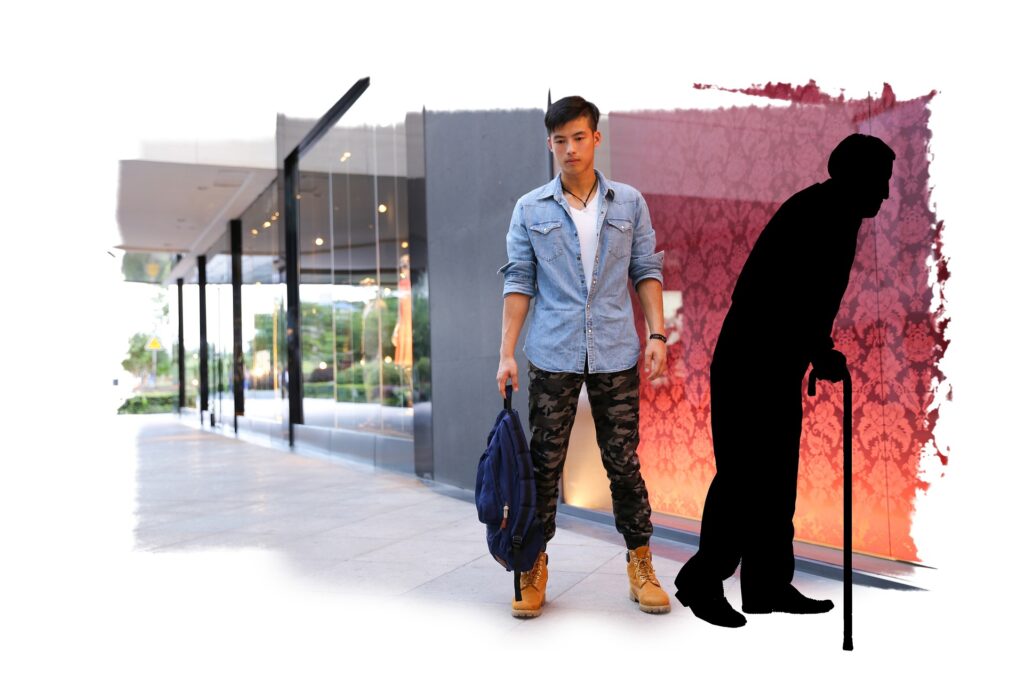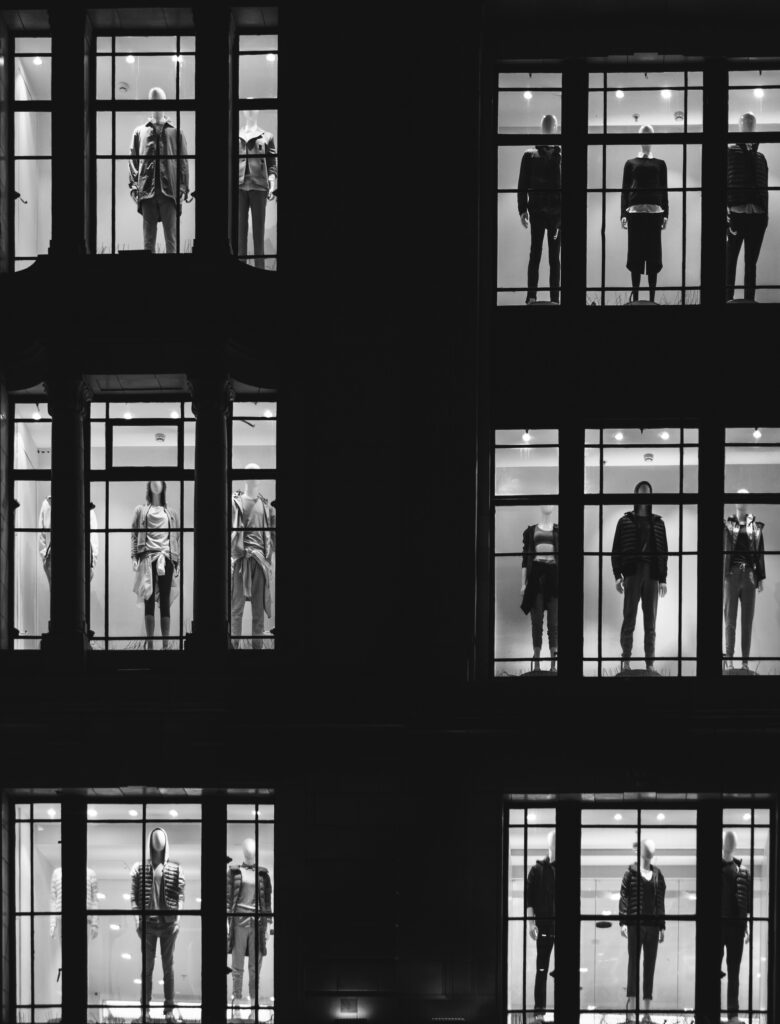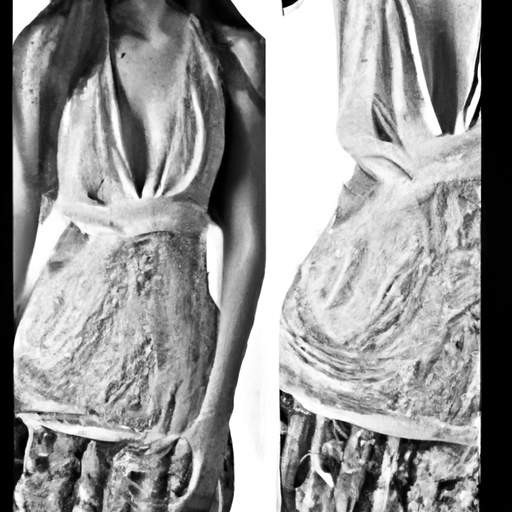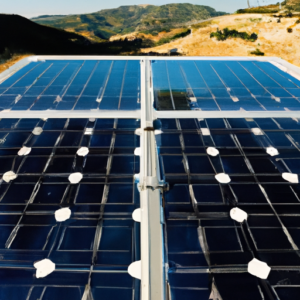What Is Slow Fashion And How Does It Differ From Fast Fashion: Introduction
In today’s fast-paced world, where trends change in the blink of an eye, it’s important to pause and ponder upon the concept of slow fashion. But what is slow fashion and how does it differ from fast fashion? Slow fashion, in essence, is all about mindful consumption and sustainable practices. Unlike its counterpart, fast fashion, which promotes disposable and cheaply made clothing, slow fashion focuses on creating timeless pieces that are environmentally friendly and ethically produced. This article will explore the key differences between slow fashion and fast fashion, shedding light on the importance of embracing a more conscious approach to our wardrobe choices. So, come along on this journey as we unravel the world of slow fashion and discover how it can be a true game-changer in the fashion industry.
Check Out Our Top Eco Friendly Product Picks On Amazon Here
Definition of Slow Fashion
Slow fashion is a movement that promotes sustainable and ethical practices within the fashion industry. It emphasizes quality over quantity, encouraging consumers to buy well-made, timeless garments that are designed to last. Unlike fast fashion, which prioritizes mass production and quick turnover, slow fashion aims to create a more conscious and responsible approach to clothing consumption.
Slow fashion is characterized by several key principles that differentiate it from fast fashion. Firstly, it focuses on craftsmanship and attention to detail, ensuring that garments are made to a high standard of quality. Slow fashion also values transparency and fairness in the production process, promoting ethical labor practices and ensuring that workers are paid a fair wage.
Additionally, slow fashion promotes sustainability by using environmentally friendly materials and production methods. This includes using organic or recycled fabrics, minimizing waste, and reducing carbon emissions. Slow fashion also encourages consumers to develop a more personal and individual style, rather than following trends dictated by the fashion industry.
Sustainable Production Practices
Slow fashion embraces sustainable production practices that minimize its environmental impact. This includes using organic or natural fibers that are less harmful to the environment during cultivation, as well as avoiding the use of toxic chemicals in the dying and finishing processes. Slow fashion brands also prioritize ethical manufacturing, ensuring that workers are treated fairly and provided with safe working conditions.
To further reduce waste and promote sustainability, slow fashion brands often focus on producing smaller quantities of garments. By avoiding overproduction and excess inventory, they can minimize the amount of unsold merchandise that ultimately ends up in landfills. Slow fashion encourages a more thoughtful approach to clothing production, where each piece is carefully considered and made with longevity in mind.
Definition of Fast Fashion
In contrast to slow fashion, fast fashion is characterized by its emphasis on rapid, low-cost production and quick turnover of new clothing styles. Fast fashion brands aim to replicate runway trends, making them accessible and affordable for the mass market. This leads to frequent collection turnovers, with new styles hitting the shelves every few weeks.
Characteristics and Principles of Fast Fashion
Fast fashion prioritizes speed and affordability, offering consumers trendy clothing at low prices. It relies on a model of mass production, often outsourcing manufacturing to countries with low labor costs. Fast fashion brands aim to quickly deliver new styles to meet consumer demand, resulting in a constant cycle of consumption and disposal.
Harmful Production Practices
Fast fashion is associated with various harmful production practices that have detrimental effects on both the environment and workers. Due to the pressure to produce garments quickly and at low costs, fast fashion often relies on exploitative labor conditions. Workers are often paid low wages, work long hours in unsafe conditions, and face limited protections and benefits.
In addition to the ethical concerns, fast fashion also contributes to significant environmental damage. The production of cheap, low-quality garments requires vast amounts of resources, including water, energy, and chemicals. Chemical dyes and finishes used in fast fashion often end up polluting waterways, while textile waste accumulates in landfills, releasing harmful toxins into the environment.

Check Out Our Top Eco Friendly Product Picks On Amazon Here
What is Slow Fashion and How Does it Differ From Fast Fashion: Key Differences
There are several key differences between slow fashion and fast fashion that set them apart in terms of their environmental impact, ethical concerns, quality of products, and consumer behavior.
Environmental Impact
One of the main differences between slow fashion and fast fashion is their respective environmental impacts. Slow fashion brands prioritize sustainability, using eco-friendly materials and implementing production methods that minimize waste and carbon emissions. In contrast, fast fashion relies on resource-intensive manufacturing, leading to significant pollution and the generation of large amounts of textile waste.
Ethical Concerns
Ethical concerns are another crucial distinction between slow fashion and fast fashion. Slow fashion brands prioritize fair labor practices, ensuring that workers are paid decent wages and provided with safe working conditions. On the other hand, fast fashion is notorious for its exploitation of workers, particularly in developing countries with lax labor regulations.
Quality of Products
Slow fashion is known for its emphasis on quality over quantity. Slow fashion garments are made to last, with attention to detail and craftsmanship. In contrast, fast fashion prioritizes low cost and quick turnover, often resulting in garments of poor quality with a short lifespan.
Consumer Behavior
Slow fashion encourages a more thoughtful and conscious approach to consuming clothing. It promotes individual style and expression, encouraging consumers to invest in pieces that they truly love and will wear for years to come. Fast fashion, on the other hand, promotes a culture of constant consumption, encouraging consumers to buy cheaply made, trendy garments that quickly go out of style.
Slow Fashion: Benefits and Advantages
Slow fashion offers several benefits and advantages that make it an appealing alternative to fast fashion.
Reduced Environmental Impact
By prioritizing sustainable materials and production methods, slow fashion significantly reduces its environmental impact. Organic or recycled fabrics are used, minimizing the use of harmful chemicals and reducing water consumption. The focus on quality over quantity also means that fewer garments are produced, reducing waste and the overall carbon footprint of the fashion industry.
Improved Working Conditions
Slow fashion brands prioritize ethical labor practices, ensuring that workers are treated fairly and provided with safe working conditions. They often partner with manufacturers that adhere to strict labor standards, challenging the exploitative practices commonly associated with fast fashion. By supporting slow fashion, consumers contribute to improving working conditions within the industry.
Promoting Sustainable Practices
Through their commitment to sustainability, slow fashion brands play a crucial role in promoting sustainable practices at all levels of production. By using eco-friendly materials and minimizing waste, they lead by example and encourage other brands to adopt more sustainable approaches. Slow fashion also promotes the importance of repairing and upcycling clothes, reducing the need for continuous production and disposal.
Encouraging Individual Style and Expression
Slow fashion encourages consumers to develop their personal style and express their individuality through their clothing choices. By investing in timeless pieces that truly reflect their tastes, consumers can create a wardrobe that is unique to them. Slow fashion celebrates individuality and rejects the notion that fashion should be dictated by fleeting trends.

Fast Fashion: Drawbacks and Criticisms
While fast fashion may offer low prices and trend-driven styles, it is associated with several drawbacks and criticisms.
Increasing Waste and Pollution
Fast fashion’s reliance on mass production and quick turnover leads to a significant increase in waste and pollution. Garments are often made using cheap, low-quality materials that quickly lose their shape and durability, resulting in a shorter lifespan. This leads to a large amount of textile waste that ends up in landfills, contributing to pollution and environmental degradation.
Exploitation of Workers
Ethical concerns are a central criticism of fast fashion. The industry’s push for low-cost production often leads to exploitative labor practices, with workers being paid low wages and subjected to unsafe working conditions. Many fast fashion brands outsource manufacturing to countries with weak labor regulations, further exacerbating the exploitation of workers.
Encouraging Overconsumption
Fast fashion perpetuates a culture of overconsumption, encouraging consumers to continuously buy new clothes to keep up with ever-changing trends. This leads to excessive production and consumption, placing a significant strain on resources and contributing to environmental degradation. The disposable nature of fast fashion also diminishes the value of clothing, resulting in garments being discarded after only a few wears.
Lack of Individuality
Fast fashion promotes a homogeneous and uniform style, driven by mass-produced trends. By prioritizing quantity and fast turnover, it undermines the notion of individuality and self-expression through fashion. Consumers who exclusively buy into fast fashion are more likely to be seen wearing the same items as others, diminishing their ability to stand out and showcase their personal style.
What is Slow Fashion and How Does it Differ From Fast Fashion: Challenges
While slow fashion offers numerous benefits, it also faces several challenges that hinder its widespread adoption.
Higher Price Points
One of the main challenges of slow fashion is its higher price points compared to fast fashion. Slow fashion focuses on quality and craftsmanship, which often comes at a higher cost. This can be a barrier for consumers who are accustomed to the low prices offered by fast fashion brands. However, it’s important to see the higher price as an investment in a more sustainable and ethical fashion industry.
Limited Availability
Slow fashion brands, particularly those that are independent or small-scale, often have limited availability compared to fast fashion retailers with vast distribution networks. This can make it challenging for consumers to access slow fashion options, especially in areas where fast fashion dominates the market. However, the growing popularity of slow fashion has led to increased availability through online platforms and dedicated boutiques.
Educating Consumers
Another challenge is the need to educate consumers about the benefits of slow fashion and the detrimental effects of fast fashion. Many consumers are unaware of the environmental and ethical consequences of their clothing choices. Raising awareness and providing information about slow fashion’s positive impact is essential in encouraging consumers to make more conscious buying decisions.
Competing with Fast Fashion Culture
The fast fashion industry has established itself as a dominant force in the fashion market, fueled by aggressive marketing and constant trend cycling. Slow fashion faces the challenge of competing with this culture of instant gratification and the pursuit of newness. However, as more consumers become aware of the negative consequences of fast fashion, the movement towards slow fashion is gaining momentum.

What is Slow Fashion and How Does it Differ From Fast Fashion: Steps for Embracing Slow Fashion
Embracing slow fashion involves making conscious choices about clothing consumption and supporting brands that prioritize sustainability and ethics. Here are some steps to consider:
Shopping Secondhand and Vintage
One of the most accessible ways to embrace slow fashion is by shopping secondhand or vintage. Thrift stores, consignment shops, and online platforms dedicated to pre-loved clothing offer a wide range of options. By purchasing secondhand, you give new life to existing garments and reduce the demand for new production.
Supporting Ethical and Sustainable Brands
Another step is to support ethical and sustainable fashion brands. Look for brands that prioritize transparency, fair labor practices, and environmentally friendly production methods. Many slow fashion brands focus on small-scale production, ensuring that each garment is made with care and attention.
Investing in Quality Pieces
Investing in high-quality pieces that will last for years is a key aspect of slow fashion. Look for well-made garments that use durable materials and timeless designs. While the upfront cost may be higher, the longevity of these pieces will save money in the long run and reduce the need for constant replacements.
Repairing and Upcycling Clothes
Repairing and upcycling clothes can also contribute to embracing slow fashion. Learning basic sewing skills and investing in a few tools can enable you to mend damaged garments instead of discarding them. Additionally, consider repurposing old clothes to create new, unique pieces or donating them to organizations that specialize in upcycling.
Efforts to Shift Toward Slow Fashion
The fashion industry, consumers, and governments are taking steps to shift towards slow fashion and promote more sustainable practices.
Growing Popularity of Sustainable Fashion
The growing popularity of sustainable fashion has significantly contributed to the shift towards slow fashion. Consumers are becoming more conscious of the environmental and ethical impacts of the fashion industry and are actively seeking alternatives. This increased demand for sustainable options has encouraged a greater number of brands to embrace slow fashion principles and offer more environmentally friendly and ethically made products.
Rise of Ethical Fashion Movements
Ethical fashion movements have emerged to advocate for change within the industry. These movements have raised awareness about the exploitative labor practices and environmental damage caused by fast fashion, prompting consumers to question their purchasing habits. As a result, more people are actively seeking out and supporting brands that align with their values.
Government Regulations and Incentives
Government regulations and incentives are also playing a role in encouraging the adoption of slow fashion practices. Some governments have implemented stricter labor regulations to protect workers’ rights, while others have introduced incentives for brands that prioritize sustainability and ethical practices. These measures create a more favorable environment for slow fashion and incentivize brands to adopt more responsible practices.
Collaboration and Education within the Industry
Collaboration and education within the fashion industry are crucial in driving the shift towards slow fashion. Brands, designers, and manufacturers are increasingly collaborating to create platforms and initiatives that promote sustainable practices. This includes sharing knowledge and resources, implementing best practices, and collectively advocating for change. Education within the industry, including incorporating sustainability and ethics into fashion education curricula, is also essential to foster a new generation of fashion professionals committed to slow fashion principles.

What is Slow Fashion and How Does it Differ From Fast Fashion: Role of Consumers
Consumers play a crucial role in promoting and accelerating the shift towards slow fashion. Here’s how consumers can contribute:
Awareness and Education
Educating oneself about the impact of fast fashion and the benefits of slow fashion is the first step. By seeking information and staying informed about industry practices, consumers can make more conscious decisions about their clothing purchases and support the slow fashion movement.
Making Conscious Buying Decisions
One of the most impactful ways consumers can promote slow fashion is by making conscious buying decisions. This involves considering the environmental and social implications of purchasing and choosing to support brands that align with sustainable and ethical practices. By prioritizing quality over quantity and investing in well-made, timeless pieces, consumers contribute to the growth of slow fashion.
Participating in Clothing Swaps and Renting
Participating in clothing swaps and renting services is another way to promote slow fashion. Swapping clothes with friends, attending organized clothing swaps, or utilizing rental services allows for a more varied wardrobe without the need for constant purchasing. By extending the lifespan of clothing through sharing and renting, consumers contribute to reducing waste and minimizing their environmental impact.
Demanding Transparency from Brands
Consumers have the power to demand transparency from brands and hold them accountable for their practices. By asking questions about a brand’s sourcing and manufacturing practices, consumers can encourage brands to be more transparent about their supply chain. This transparency enables consumers to make informed decisions and support brands that prioritize sustainability and ethical production.
What is Slow Fashion and How Does it Differ From Fast Fashion: Conclusion
The slow fashion movement offers a conscious and sustainable alternative to fast fashion, advocating for quality over quantity, ethical labor practices, and environmental responsibility. By embracing slow fashion, consumers can reduce their environmental footprint, support fair and safe working conditions, and promote individuality and personal style.
While slow fashion faces challenges in terms of pricing, availability, and consumer education, efforts to shift towards this more responsible approach to fashion are gaining momentum. Through collaboration, education, and consumer demand, the fashion industry is slowly turning towards a more sustainable future. Embracing slow fashion is not only a conscious choice but also a powerful step toward transforming the fashion industry and creating a more sustainable and ethical future.
Check Out Our Top Eco Friendly Product Picks On Amazon Here




